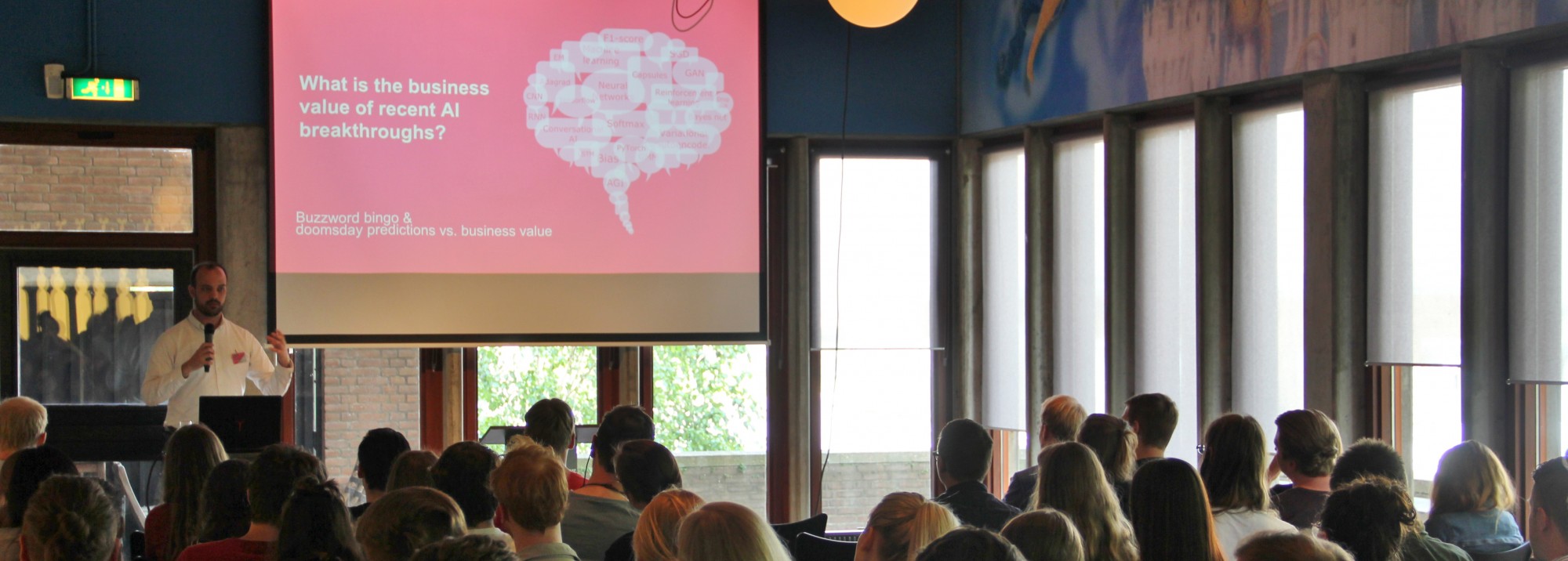Machine learning, reinforcement learning, conversational AI, dropouts, F1-scores, capsule networks, LSTM, PyTorch, convolutional neural networks – what method is there to this terminology madness? How do we pierce through this buzzword bingo to arrive at business added value relevant to specific customer cases?
Whereas researchers that come up with new AI-concepts and methods will typically emphasize technical rigor and positioning within a theoretical field, AI and data science practitioners have to deal with legacy and sometimes inappropriate or inadequate data streams. In addition, it may not be directly apparent what type of AI can add value and as a part of what business process. And even when this is assumed to be known, the work force may not be convinced that a solution will work for them. As such, when applying conceptually beautiful AI-centred ideas in practice, various real-world contextual influences and restrictions come into play.
Buzzwords vs Business Value: AI Thought Leadership in Practice
During this keynote speech Roger van Daalen demonstrated what AI buzzwords will practically mean for organizations and how this business value is best incorporated in practice through a series of workshops targeted at different layers of the organisation. By showing how developments in machine learning and AI lead to more natural information systems access, augment creative work by facilitating tasks and decision making, and optimise or automate business processes, we show how organisations that partner up with Devoteam benefit from effective AI business solutions to drive their digital transformation. Thereby they experience increasing human resource cost effectiveness, more revenue-generating activities, higher service quality, and increased employee satisfaction and customer retention, whilst reducing employee training costs, repetitive and undesirable work, and human error.

Discussing one customer specifically, Roger described how the chatbot solution was tailor-made to work with the Dutch language at production level out of the box. To make this possible, Devoteam pioneered a data synthesis method and enhanced a language understanding model, thereby making it possible to kick-start chatbot accuracy and functionality. Whereas this would normally take a chatbot weeks or months of frustrating user training, through its novel approach Devoteam was able to demonstrate accurate and complete functionality out of the gate. In addition, he discussed how the particular approach allowed for on-premise functionality to alleviate privacy concerns, and could be integrated rapidly into legacy systems.